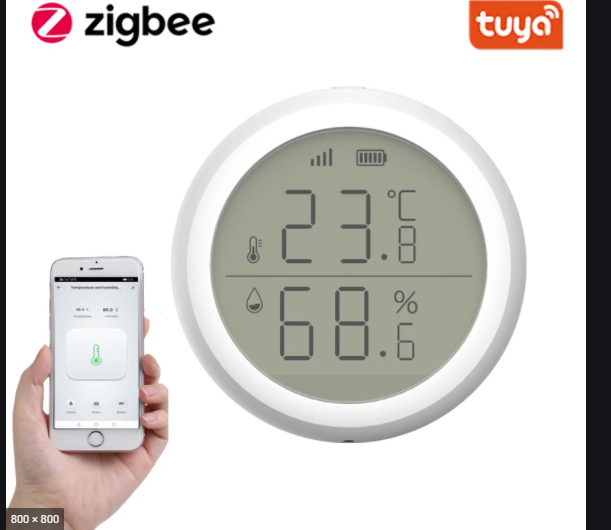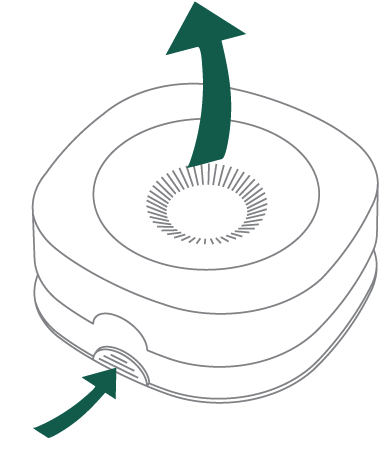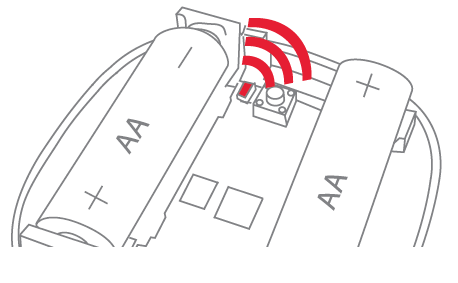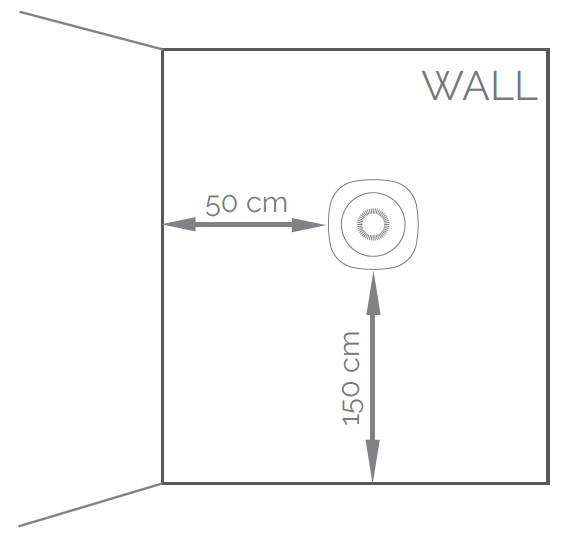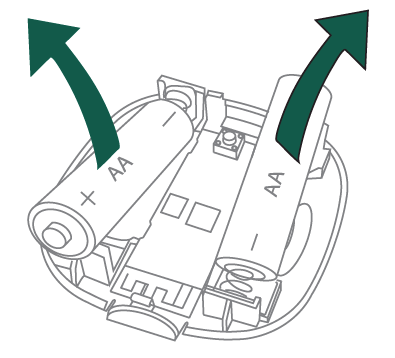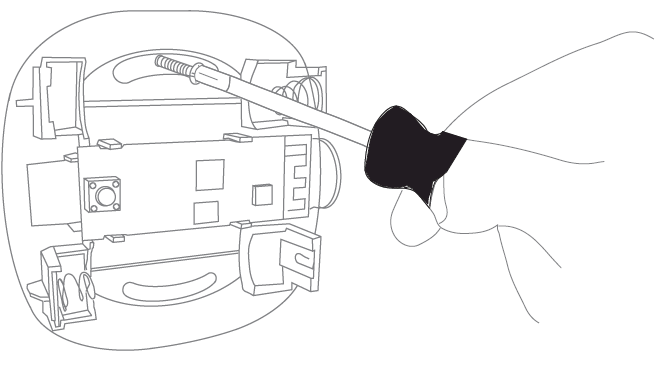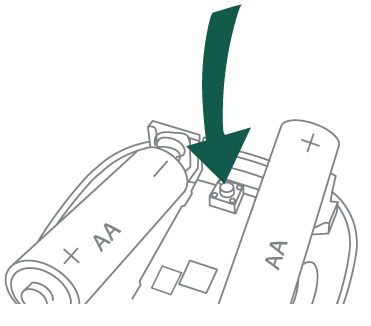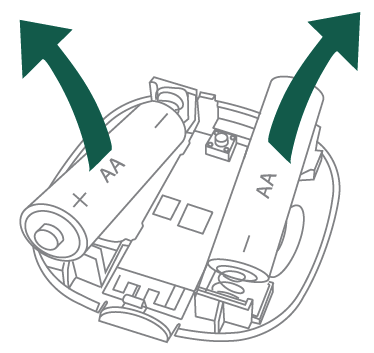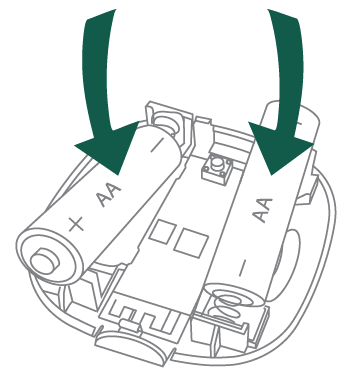
Smart Humidity Sensor
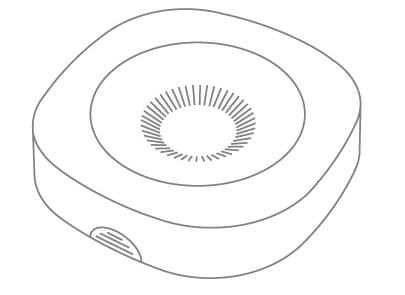
INSTALLATION MANUAL
Product description
The Smart Humidity Sensor allows you to protect your building and belongings by monitoring the temperature and humidity levels, and receive immediate alerts if the climate fluctuates to unsafe levels.By supervising the indoor climate, the wireless Smart Humidity Sensor helps maintain the ideal comfort level and protect interior, electronics, musical instruments, furniture, artwork, and other humidity-sensitive household items.
Precautions
- Do not remove the product label as it contains important information.
- Be aware that electronics are sensitive to static electricity, so aim to discharge before touching, and avoid touching any components inside the device.
- Do not place the Smart Humidity Sensor on the ceiling, or behind obstacles, such as curtains.
- Do not place the Smart Humidity Sensor under direct sunlight or bright light.
- Avoid placing the Smart Humidity Sensor close to radiators or electromagnetic fields.
- Do not paint the sensor.
Getting started
- Open the sensor by pushing the switch and pulling the top of the casing.

- Insert two AA batteries respecting the polarities.
- The Smart Humidity Sensor will now start searching (up to 15 minutes) for a Zigbee network to join.

- Make sure that the Zigbee network is open for joining devices and will accept the Smart Humidity Sensor.
- While the Smart Humidity Sensor is search-ing for a Zigbee network to join, the LED flashes red.

- When the LED stops flashing, the Smart Humidity Sensor has successfully joined the Zigbee network.
Placement
- Place the sensor indoors at a temperature between 0-50°C.
- Inside the room, in which you want to monitor humidity levels.
- The Smart Humidity Sensor should be placed on a wall, reachable for battery testing and maintenance.

Mounting
- Open the casing of the Smart Humidity Sensor and remove the batteries.

- Use double-sided tape or screws to attach the sensor on the wall.

- Insert batteries respecting the polarities.Make sure that the Smart Humidity Sensor has joined a network before closing the casing.

Resetting
Resetting is needed if you want to connect your Smart Humidity Sensor to another gateway or if you need to perform a factory reset to eliminate abnormal behaviour.
STEPS FOR RESETTING
- Open the casing of the Smart Humidity Sensor.
- Press and hold the round menu button inside the device.

- While you are holding the button down, the LED first flashes once, then two times in a row, and finally numerous times in a row.
- Release the button while the LED is flashing numerous times in a row.
- After you release the button, the LED shows one long flash, and the reset is completed.
Fault finding
- If the search for a gateway has timed out, a short press on the button will restart it.
- In case of a bad or wireless weak signal, change the location of the Smart Humidity Sensor. Otherwise, you can relocate your gateway or strengthen the signal with a smart plug.
Battery replacement
The device will blink twice every minute when the battery is low.CAUTION: RISK OF EXPLOSION IF BATTERIES ARE REPLACED BY AN INCORRECT TYPE. DISPOSE OF THE BATTERIES IN ACCORDANCE WITH INSTRUCTIONS.CAUTION: When removing cover for battery change – Electrostatic Discharge (ESD) can harm electronic components inside.
- Open the casing of the Smart Humidity Sensor to replace the batteries.

- Replace the batteries respecting the polarities.

- Close the casing of the sensor.
Disposal
Dispose the product and batteries properly at the end of life. This is electronic waste which should be recycled.
FCC Statement
Changes or modifications to the equipment not expressly approved by the party responsible for compliance could void the user’s authority to operate the equipment.NOTE: This equipment has been tested and found to comply with the limits for a Class B digital device, pursuant to Part 15 of the FCC Rules. These limits are designed to provide reasonable protection against harmful interference in a residential installation.This equipment generates, uses and can radiate radio frequency energy and, if not installed and used in accordance with the instructions, may cause harmful interference to radio communications. However, there is no guarantee that interference will not occur in a particular installation.
If this equipment does cause harmful interference to radio or television reception, which can be determined by turning the equipment off and on, the user is encouraged to try to correct the interference by one or more of the following measures:
- Reorient or relocate the receiving antenna.
- Increase the separation between the equipment and receiver.
- Connect the equipment into an outlet on a circuit different from that to which the receiver is connected.
- Consult the dealer or an experienced radio/TV technician for help.
This device complies with FCC RF radiation exposure limits set forth for an uncontrolled environment. The antenna used for this transmitter must be installed to provide a separation distance of at least 20 cm from all persons and must not be co-located or operating in conjunction with any other antenna or transmitter.This device complies with part 15 of the FCC Rules. Operation is subject to the following two conditions:
- This device may not cause harmful interference
- This device must accept any interference received, including interference that may cause undesired operation.
IC statement
This device contains licence-exempt transmitter(s)/receiver(s) that comply with Innovation, Science and Economic Development Canada’s license-exempt RSS(s). Operation is subject to the following two conditions:
- This device may not cause interference.
- This device must accept any interference, including interference that may cause undesired operation of the device.
This equipment complies with IC RSS-102 radiation exposure limits set forth for an uncontrolled environment. This equipment should be installed and operated with minimum distance 20 cm between the radiator and your body.
ISED Statement
Innovation, Science and Economic Development Canada ICES-003 Compliance Label: CAN ICES-3 (B)/NMB-3(B).
CE Certification
The CE mark affixed to this product confirms its compliance with the European Directives which apply to the product and, in particular, its compliance with the harmonized standards and specifications.IN ACCORDANCE WITH THE DIRECTIVES
- Radio Equipment Directive (RED) 2014/53/EU
- RoHS Directive 2015/863/EU amending 2011/65/EU
Other certifications
Zigbee Home Automation 1.2 certified.
All rights reserved.frient assumes no responsibility for any errors, which may appear in this manual. Furthermore, frient reserves the right to alter the hardware, software, and/or specifications detailed herein at any time without notice, and frient does not make any commitment to update the information contained herein. All the trademarks listed herein are owned by their respective owners.Distributed by frient A/STangen 68200 Aarhus NDenmarkwww.frient.comCopyright © frient A/S
References
[xyz-ips snippet=”download-snippet”]

